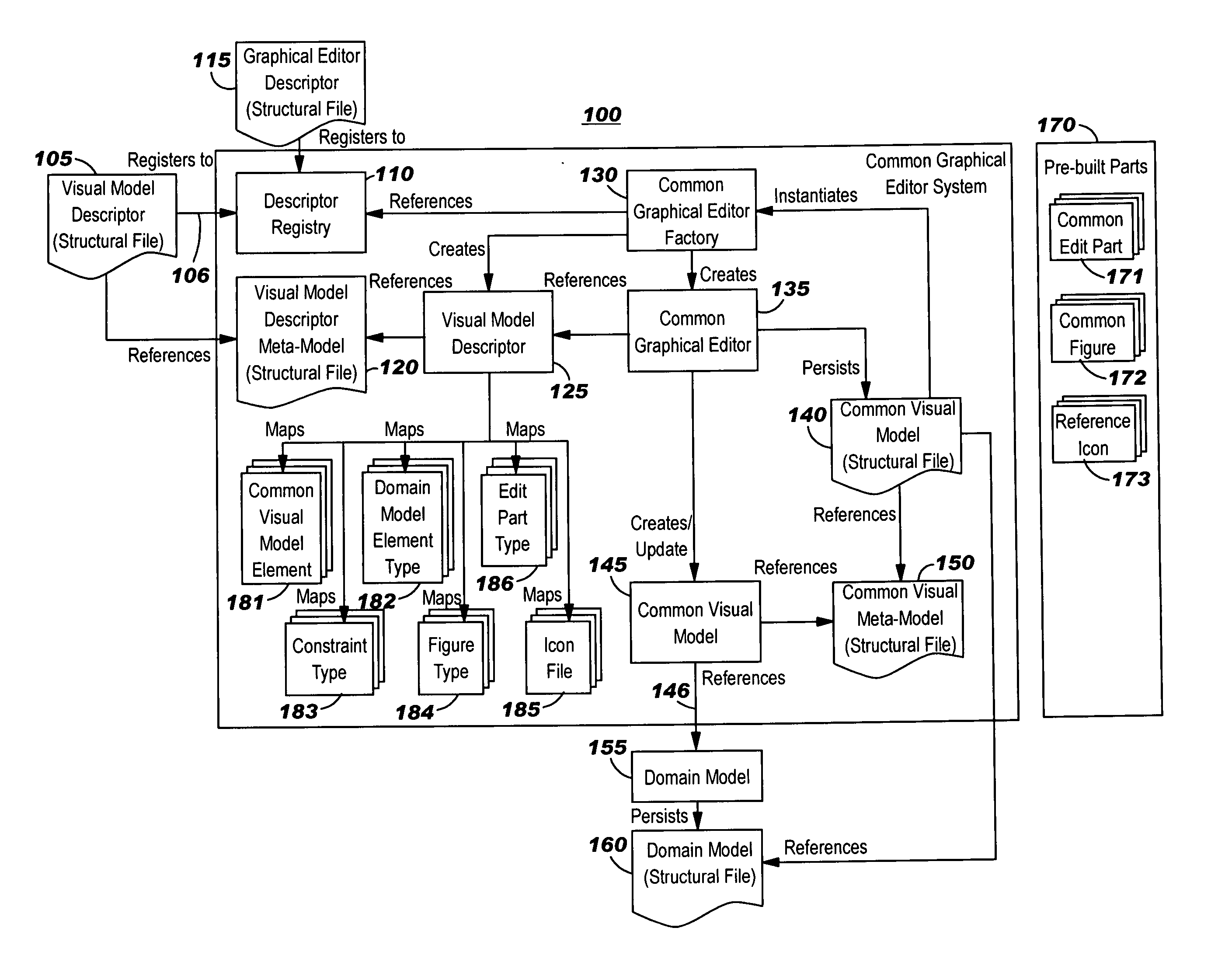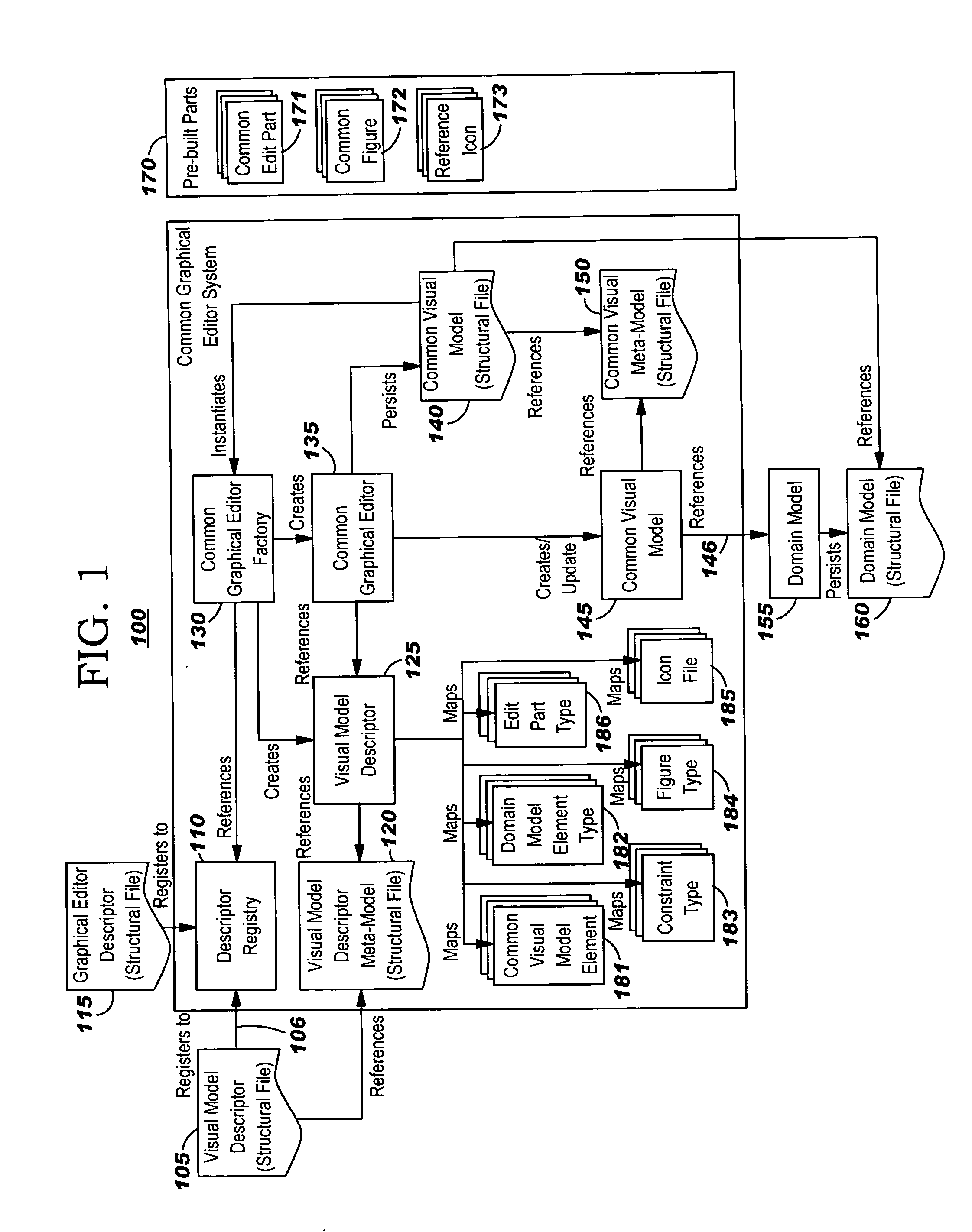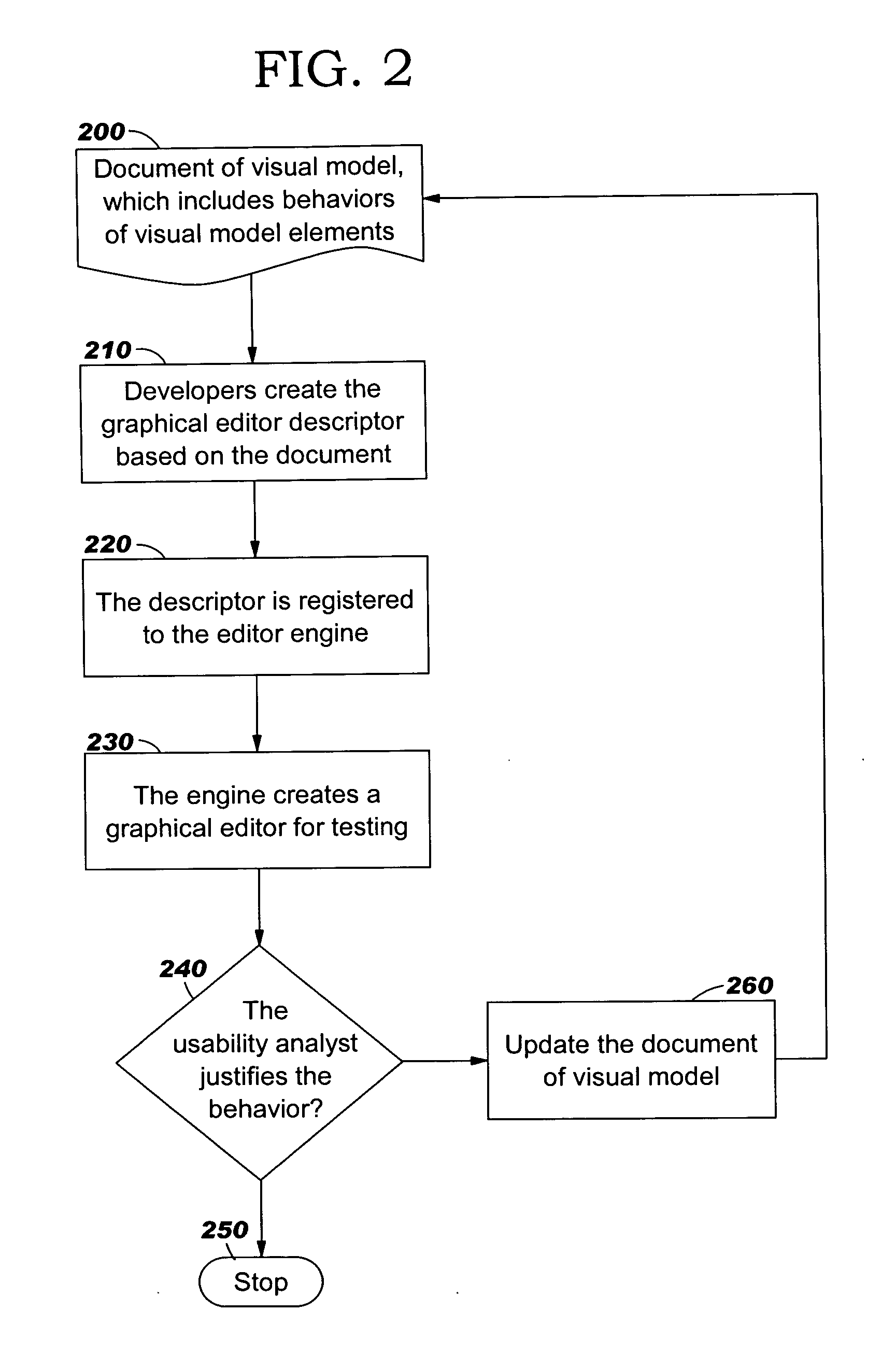Graphical editor with incremental development
a graphical editor and incremental development technology, applied in the field of computer programming, can solve the problems of difficult task of creating a graphical editor, large interaction with usability analysts, time-consuming and costly undertaking, etc., and achieve the effect of quick creation of a graphical editor
- Summary
- Abstract
- Description
- Claims
- Application Information
AI Technical Summary
Benefits of technology
Problems solved by technology
Method used
Image
Examples
Embodiment Construction
[0034] The present invention provides incremental graphical editor development capability, using combined modularity patterns by introducing a visual composition model and a set of visual modules. FIG. 1 shows a high-level representation of components involved in preferred embodiments of the invention. As illustrated therein, the visual composition model comprises what is referred to herein as a “Common Graphical Editor System”100. This system interfaces with supporting models 155, while the set of visual modules is preferably realized using pre-built plug-and-play parts 170.
[0035] In preferred embodiments, the invention categorizes visual composition models into two basic kinds, a node semantic model and a link semantic model, and creates a common interface (referred to herein as a “Common Visual Model”, illustrated at 145 in FIG. 1) which defines the common behavior of all the visual composition models. “Semantic models”, as that term is used herein, describe the meanings of a pa...
PUM
 Login to View More
Login to View More Abstract
Description
Claims
Application Information
 Login to View More
Login to View More - R&D
- Intellectual Property
- Life Sciences
- Materials
- Tech Scout
- Unparalleled Data Quality
- Higher Quality Content
- 60% Fewer Hallucinations
Browse by: Latest US Patents, China's latest patents, Technical Efficacy Thesaurus, Application Domain, Technology Topic, Popular Technical Reports.
© 2025 PatSnap. All rights reserved.Legal|Privacy policy|Modern Slavery Act Transparency Statement|Sitemap|About US| Contact US: help@patsnap.com



